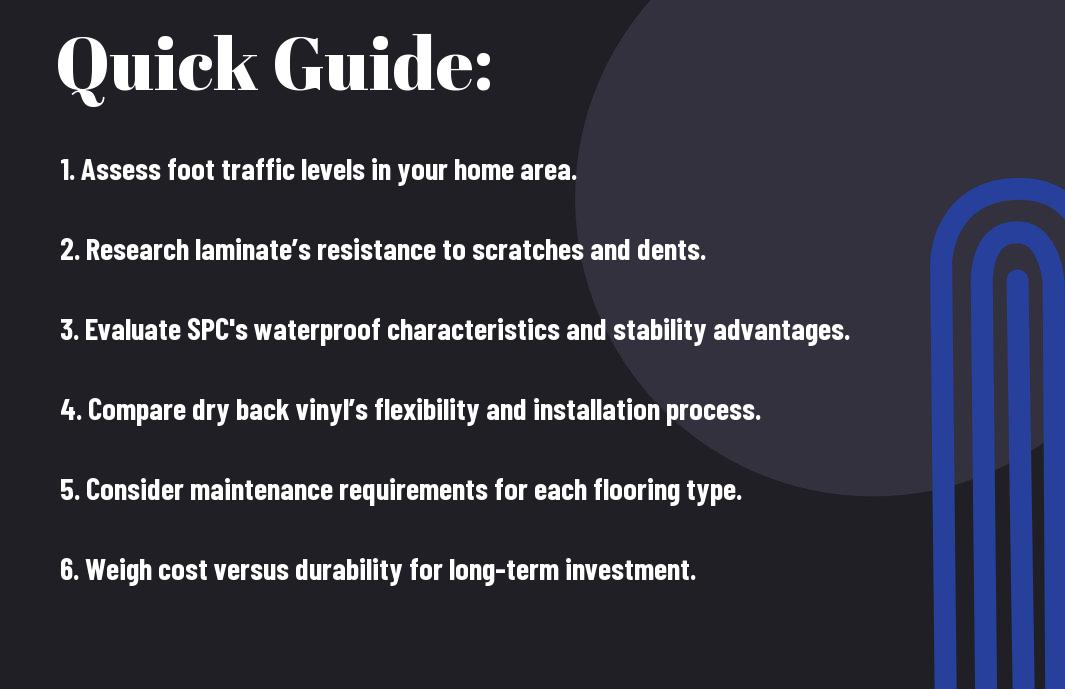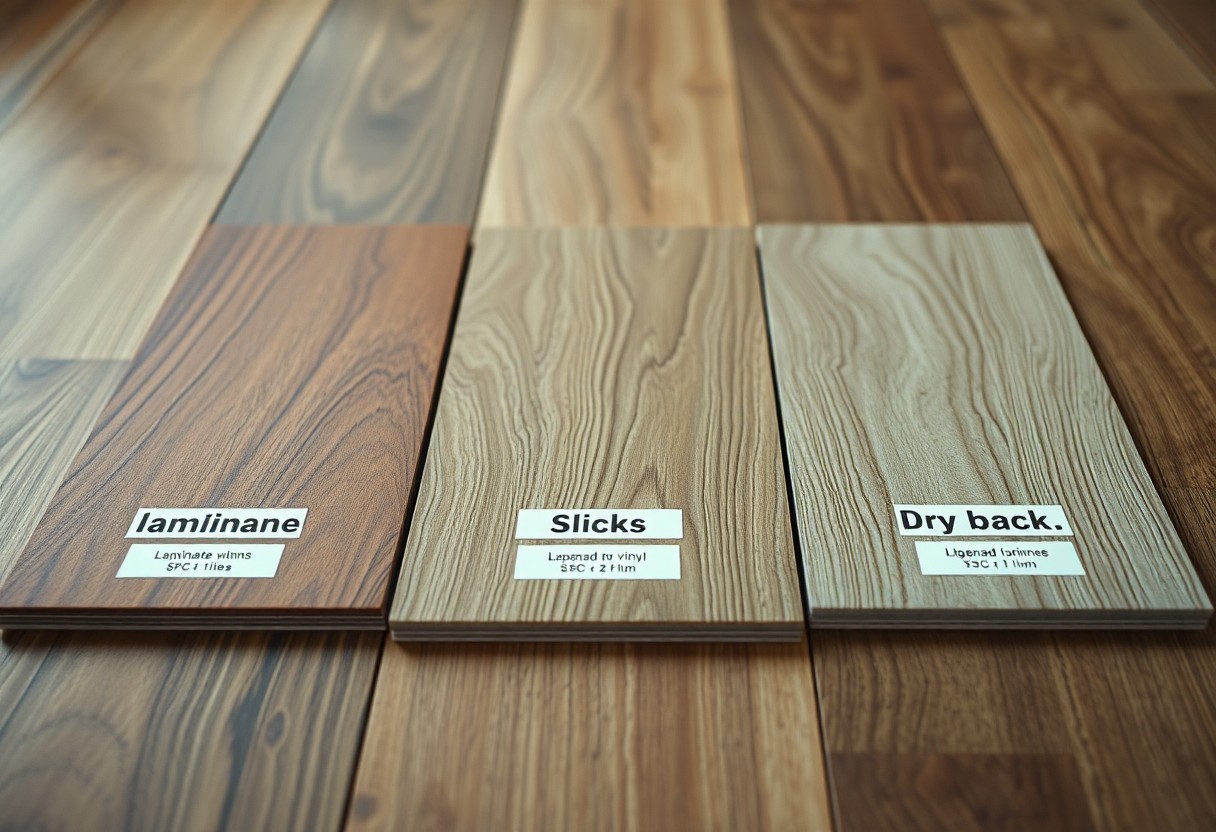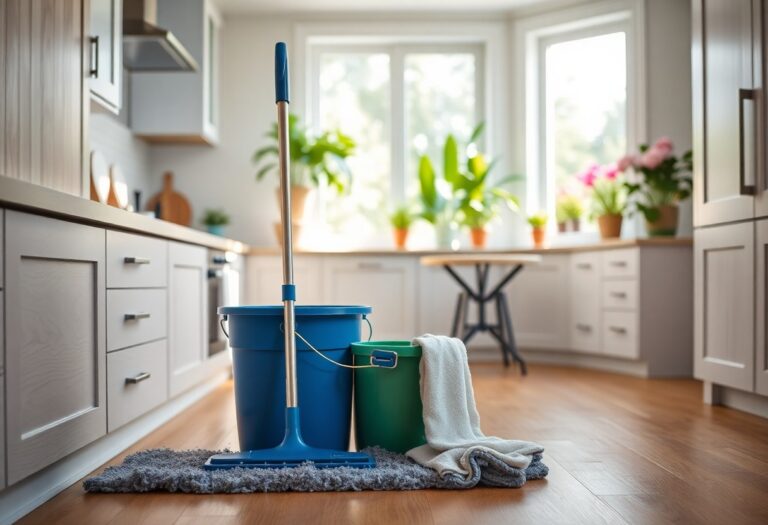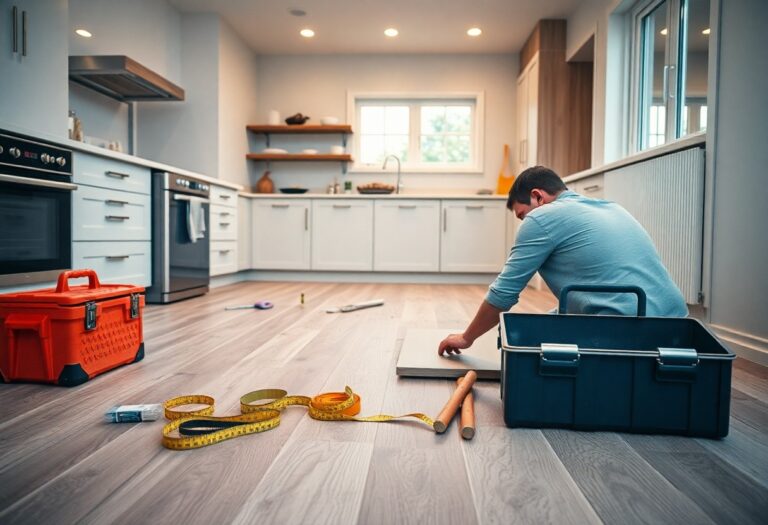Most homeowners face the daunting task of choosing the right flooring material that balances durability with style. In this guide, you’ll explore the pros and cons of laminate, SPC (Stone Plastic Composite), and dry back vinyl, ensuring you make an informed decision tailored to your lifestyle and home needs. By understanding the unique characteristics of each option, you can choose a flooring solution that not only elevates your space but stands the test of time while fitting your budget.

Overview of Flooring Types
Your choice of flooring significantly impacts the durability and aesthetics of your home. Different flooring types serve various needs, budgets, and preferences. Here’s a breakdown of three popular options:
| Flooring Type | Durability |
| Laminate | Moderate |
| SPC | High |
| Dry Back Vinyl | Good |
| Installation | Varies |
This guide will help you make an informed decision.
Laminate Flooring
Flooring laminate offers a versatile and cost-effective solution, mimicking the appearance of hardwood or stone. Made from high-density fiberboard (HDF), it is laminated with a protective layer, enhancing its resistance to scratches and stains. This flooring is easy to install and comes in various styles, fitting different tastes and decor themes.
Stone Plastic Composite (SPC)
Stone SPC features a rigid core made of limestone and PVC, providing enhanced durability and water resistance. Ideal for high-traffic areas, SPC flooring is known for its stability and ability to withstand extreme temperatures. The surface is also scratch-resistant, making it suitable for homes with pets or children.
Plus, SPC flooring is often easier to maintain compared to traditional options, as it doesn’t require special cleaning products. The waterproof capability allows it to be installed in moisture-prone areas like kitchens and bathrooms, ensuring lasting performance without warping or damage.
Dry Back Vinyl
Types of dry back vinyl feature an adhesive backing that ensures a secure installation directly onto the subfloor. This flooring option is versatile, available in a wide range of designs and textures, and offers good moisture resistance, making it suitable for various residential applications.
This option allows for a seamless look and can be a practical choice for busy households. Its lower maintenance needs and durability make dry back vinyl a popular choice for homeowners looking for stylish and functional flooring.
Key Factors in Flooring Durability
The durability of flooring is influenced by several key factors. Understanding these elements will help you choose the best option for your home:
- Material Composition
- Wear Layer Thickness
- Installation Method
Thou should pay close attention to each of these factors when evaluating flooring options.
Material Composition
Even the best flooring can fail if made from low-quality materials. High-quality laminate, SPC, and dry back vinyl each have unique composition characteristics affecting durability. Opting for materials that resist moisture and wear can significantly extend the lifespan of your floors.
Wear Layer Thickness
Layer thickness is a primary factor in determining how well your flooring can withstand daily traffic and wear. A thicker wear layer generally means better resistance to scratches, dents, and stains, making it a wise choice for high-traffic areas in your home.
Another aspect to consider is that thicker wear layers can offer added comfort and a more stable flooring surface. Depending on your lifestyle and the amount of foot traffic in your home, investing in a product with a robust wear layer can lead to long-term satisfaction and lower maintenance needs.
Installation Method
With flooring options, the installation method plays a vital role in durability. Some flooring types are designed for DIY projects, while others may require professional installation, which can affect how well your flooring holds up over time.
Wear installation carefully, as improperly laid flooring can lead to premature wear and damage. Choosing a reputable installer or closely following installation guidelines can ensure a solid foundation for your flooring, enhancing its overall durability and performance over the years.
Pros and Cons of Each Flooring Type
Unlike other flooring options, each type brings its own unique set of advantages and drawbacks. Understanding these can help you make an informed choice for your home.
| Flooring Type | Pros | Cons |
|---|---|---|
| Laminate | Budget-friendly, easy installation, and scratch-resistant | Susceptible to moisture damage, can’t be refinished |
| SPC | Waterproof, durable, and comfortable underfoot | Can be more expensive, limited aesthetic options |
| Dry Back Vinyl | Easy to clean, versatile designs, and water-resistant | Can dent or scratch easily, installation requires prep |
Durability of Laminate
For laminate flooring, the durability largely depends on its construction and the quality of the materials used. Higher-grade laminates offer better resistance to wear, scratches, and fading, making them ideal for busy areas in your home.
Durability of SPC
Clearly, SPC (stone plastic composite) flooring stands out for its exceptional durability, thanks to its rigid core and waterproof properties. It withstands heavy foot traffic and resists dents, making it perfect for high-use spaces.
Type SPC flooring’s multilayer structure enhances its durability by providing additional support against impact and moisture. This means you can enjoy a long-lasting solution that withstands the demands of family life without worrying about wear and tear.
Durability of Dry Back Vinyl
One significant advantage of dry back vinyl flooring is its high resistance to moisture and spills, making it suitable for areas like kitchens and bathrooms. However, its softness can make it prone to dents or scratches if something heavy is dropped on it.
Another remarkable feature of dry back vinyl is how easily it can conform to uneven subfloors when properly installed. This adaptability ensures a seamless look while enhancing its overall durability in your home environment.
Tips for Choosing the Right Flooring
Many factors come into play when selecting the ideal flooring for your home. Consider these key points:
- Foot traffic in your space
- Potential moisture exposure
- Your aesthetic preferences
- Installation method
- Long-term maintenance requirements
Any decision you make should align with your specific needs and lifestyle.
Assessing Your Lifestyle
Flooring choices should reflect your daily activities and preferences. If you have children or pets, durability and easy maintenance should be at the forefront of your decision. On the other hand, if you entertain frequently, you may want to consider aesthetics and comfort. Be honest about how you use your space, as this will guide you toward the most suitable flooring options.
Evaluating Your Budget
Your budget is a significant factor when choosing flooring. Determine how much you’re willing to spend, factoring in both materials and installation costs. Remember to consider long-term value, as some more expensive options may save you money through durability and lower maintenance needs.
Evaluating your budget means assessing both initial costs and potential future expenses. While you might find appealing lower-cost options, the longevity and maintenance considerations may lead to higher costs down the line. Therefore, investing in quality flooring could yield savings through increased durability and reduced need for replacements or repairs.
Considering Climate Conditions
Clearly, your local climate can impact your flooring choice. Areas with high humidity may require moisture-resistant materials, while regions with colder temperatures might benefit from options that provide insulation. Knowing your climate conditions helps you select a flooring solution that maintains its appearance and performance over time.
Lifestyle factors play a pivotal role in how flooring interacts with your local climate. For instance, vinyl flooring is known for its water resistance, making it ideal for humid conditions. In contrast, hardwood can expand and contract with fluctuating temperatures, which could lead to warping. Taking climate into account helps ensure your flooring withstands environmental challenges while remaining aesthetically pleasing.

Step-by-Step Guide to Flooring Installation
Despite the challenges involved in flooring installation, breaking the process down into manageable steps can simplify your project. Below are key stages to follow during installation:
| Stage | Details |
|---|---|
| Preparation | Clear the area and gather tools and materials. |
| Subfloor Inspection | Check the subfloor for damage and cleanliness. |
| Installation | Follow specific methods for each flooring type. |
| Finishing Touches | Install baseboards and secure edges. |
Preparing the Subfloor
Any successful flooring installation begins with proper subfloor preparation. Ensure your subfloor is dry, level, and free of debris. Any imperfections should be addressed to avoid uneven wear or damaging the new flooring. Taking these steps not only enhances the aesthetics but also extends the lifespan of your flooring.
Installation Techniques for Each Type
If you want a flawless installation, understanding the specific techniques for laminate, SPC, and dry back vinyl is imperative. Each type has unique requirements; for instance, laminate typically requires a floating installation, while SPC may need gluing or locking methods, depending on the planks. Dry back vinyl usually involves adhesive application for secure placement.
Installation methods vary significantly among the three flooring types. Laminate flooring relies on a click-lock system that allows planks to float over the subfloor without glue, making it easier to install. SPC often employs a similar click system but may also include glue-down methods for added stability. Dry back vinyl requires adhesive for installation, ensuring the planks adhere firmly to the subfloor and minimizing any shifting over time.
Post-Installation Care
Clearly, maintaining your new flooring is imperative for longevity. Regular cleaning, avoiding excessive moisture, and using appropriate cleaning solutions will help keep your floor looking fresh. Additionally, ensure that heavy furniture is placed carefully to prevent dents or scratches.
Installation care significantly impacts your flooring’s durability. Implement a consistent cleaning regime using recommended products, and avoid using steam mops that may introduce too much moisture. Also, consider using floor mats and furniture pads to further protect against wear and tear, prolonging the life of your investment.
Maintenance Tips for Flooring Durability
Keep your flooring looking its best and extend its lifespan with some simple maintenance tips:
- Regularly sweep or vacuum to remove dirt and debris.
- Use a damp mop with a suitable cleaner for your floor type.
- Avoid harsh chemicals that may damage the surface.
- Place mats at entryways to minimize dirt and wear.
- Address spills immediately to prevent stains.
Assume that following these tips will help maintain your flooring’s durability for years to come.
Cleaning Practices
The right cleaning practices play an imperative role in maintaining your flooring’s appearance and durability. Use a microfiber mop or soft broom for everyday cleaning. For deeper cleans, utilize manufacturer-recommended cleaning solutions to tackle tough stains without causing harm.
Preventative Measures
Measures like placing furniture pads under legs can prevent scratches and dents on your flooring surfaces. Regularly inspecting your flooring for signs of wear allows you to address issues before they worsen.
It’s beneficial to rotate furniture periodically and rearrange rugs to promote even wear. Additionally, avoid wearing shoes with hard soles indoors, as this will minimize unnecessary damage caused by daily activities.
Long-Term Care
Care for your flooring involves more than just regular cleaning; you should also adopt a proactive approach to enhance longevity. This may include resealing or refinishing surfaces when necessary.
Durability can be significantly improved through routine inspections and timely professional maintenance. Ensuring that any scratches or wear are addressed promptly will help your flooring sustain its quality for years, preventing costly replacements.
Final Words
Considering all points, it’s necessary for you to evaluate the durability of laminate, SPC, and dry back vinyl flooring in relation to your specific lifestyle and needs. Each option offers distinct benefits and drawbacks, depending on factors such as foot traffic, moisture exposure, and aesthetic preferences. By understanding these characteristics, you can make an informed decision that enhances the longevity of your flooring solution while fitting your home’s design. Weigh your choices thoughtfully, and invest in flooring that best suits your environment and style.





